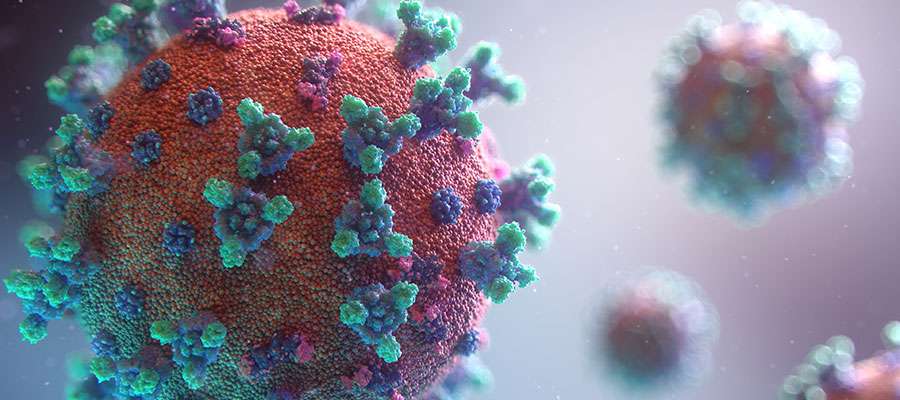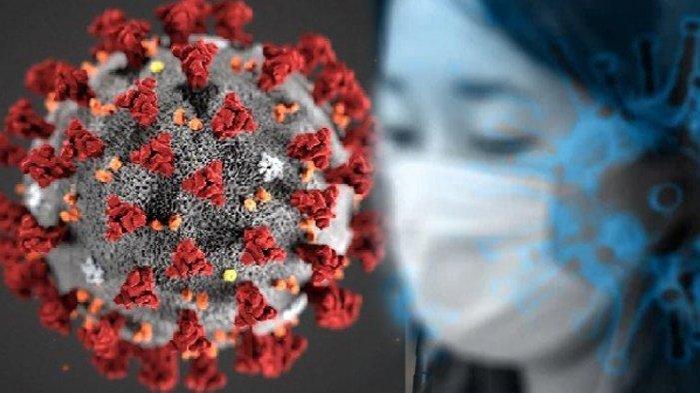COVID-19: A Global Crisis and Its Ongoing Impact in 2024

The COVID-19 pandemic, which began in December 2019, has been one of the most transformative global events of the 21st century. From its origins in Wuhan, China, to becoming a worldwide public health crisis, COVID-19 has affected nearly every aspect of human life, from healthcare and economics to education and social dynamics. As of 2024, the pandemic is officially in its “endemic” phase in many regions, but its consequences continue to reverberate globally. This article examines the current state of COVID-19, its long-term effects, and the lessons learned during this unprecedented public health emergency.
The Journey to the Endemic Phase
The early days of COVID-19 were marked by confusion, fear, and uncertainty. Governments around the world rushed to respond to a rapidly spreading virus that was highly contagious, but for which there were no known treatments or vaccines. Initial public health measures, including strict lockdowns, travel bans, and widespread quarantines, sought to slow the spread of the virus and protect vulnerable populations. Yet, despite these efforts, the disease caused immense loss of life and overwhelmed healthcare systems in many countries.
By 2021, scientists and pharmaceutical companies developed COVID-19 vaccines at an unprecedented pace. The introduction of vaccines, along with new antiviral treatments, dramatically shifted the trajectory of the pandemic. However, vaccine distribution was uneven, with wealthier nations securing most of the early doses, leaving low- and middle-income countries to struggle with access. This inequality exacerbated global health disparities, and many nations continued to fight high infection rates and deaths.
By 2023, much of the world had transitioned to living with COVID-19 in a way that resembled how societies handle the seasonal flu. In most countries, mass vaccination campaigns, natural immunity from previous infections, and improved treatment protocols helped keep the virus under control. Although new variants of the virus, such as the Omicron and its subvariants, emerged, the global population’s collective immunity and public health measures like mask-wearing, testing, and social distancing began to mitigate the impact.
As of 2024, COVID-19 is largely seen as an endemic virus, with periodic outbreaks and regional flare-ups that are more manageable thanks to advanced medical treatments and immunization programs. Despite this, the virus has not disappeared entirely, and certain vulnerable populations, such as the elderly and those with compromised immune systems, continue to face higher risks. However, the world is no longer in the acute phase of the pandemic, and life has gradually returned to a sense of normalcy in many regions.

Ongoing Public Health Challenges
Even though COVID-19 is no longer at the forefront of global emergency responses, its long-term impact remains a significant public health concern. One of the major challenges is long COVID, a condition in which individuals continue to experience symptoms such as fatigue, brain fog, shortness of breath, and chest pain long after their initial infection. According to a 2024 study by the World Health Organization (WHO), an estimated 10% of people who have had COVID-19 are experiencing long-term symptoms. The condition has become a source of frustration for millions of individuals worldwide and has placed additional strain on healthcare systems.
Moreover, the economic and social effects of the pandemic are still being felt, especially in countries that experienced severe outbreaks. Mental health issues, including anxiety, depression, and PTSD, have soared as a result of prolonged isolation, economic uncertainty, and the loss of loved ones. Governments and healthcare providers are working to address these growing concerns, but the mental health crisis remains an ongoing challenge.
In terms of surveillance and preparedness, COVID-19 has underscored the need for robust public health infrastructures. The pandemic revealed the weaknesses in global health systems, particularly in terms of disease surveillance, data sharing, and healthcare capacity. Moving forward, health experts and policymakers are advocating for stronger global cooperation and investment in health infrastructure to prevent future pandemics.
Vaccination: A Victory and a Challenge
Vaccination remains one of the greatest successes in the fight against COVID-19. By the end of 2023, more than 13 billion doses of COVID-19 vaccines had been administered globally. The widespread distribution of vaccines has saved millions of lives and reduced the burden on hospitals and healthcare workers. As vaccines have been adapted to combat emerging variants, booster shots have become routine, providing people with enhanced protection against severe illness.
However, global vaccine equity remains an issue. Despite the success of vaccines in wealthier nations, many low- and middle-income countries continue to struggle with limited access to vaccines. The COVAX initiative, launched by the WHO and partners, has sought to address this gap by distributing vaccines to underserved populations. While the initiative has had some successes, global vaccine distribution remains far from equitable, and many countries are still working to achieve high levels of vaccination coverage.
In addition to the logistical challenges of distributing vaccines, misinformation has also hindered vaccination efforts. False claims about vaccine safety, spread through social media and other platforms, have led to vaccine hesitancy in several countries. Addressing this issue through public education campaigns, transparency, and community engagement has been crucial in increasing vaccination rates and countering disinformation.

Economic Fallout and Recovery
The economic fallout of COVID-19 was severe and widespread, touching nearly every sector. The global economy contracted sharply in 2020 as countries closed borders, imposed lockdowns, and restricted movement. Industries such as tourism, hospitality, and entertainment were hit particularly hard, leading to massive job losses and economic instability.
In response, governments implemented large-scale fiscal stimulus packages to support businesses, workers, and healthcare systems. The United States, for example, passed several relief bills totaling trillions of dollars to prevent economic collapse. Other nations, including those in the European Union, also enacted similar measures, but the effectiveness of these interventions varied across countries.
As economies began to reopen in 2021 and 2022, the recovery process was uneven. While some economies rebounded quickly, others faced prolonged periods of stagnation due to ongoing outbreaks and limited access to vaccines. The pandemic exacerbated existing economic inequalities, and many workers in lower-income sectors faced precarious job conditions, while others in tech and finance saw their fortunes grow.
By 2024, many economies have recovered, but challenges remain. Inflation, supply chain disruptions, and labor shortages continue to cause economic strain in several regions. Governments are now focused on building resilient economies that can withstand future shocks, including public health emergencies and climate-related disasters.

Social and Cultural Shifts
The pandemic also brought about profound social and cultural changes. The widespread use of remote work, for instance, became a lasting legacy of the COVID-19 era. Many companies, particularly in technology and finance, adopted hybrid work models, allowing employees to split their time between home and the office. This shift has had long-term implications for urban planning, housing markets, and employee well-being.
Social distancing measures, mask mandates, and other restrictions also reshaped how people interact with one another. Virtual gatherings, online events, and digital platforms became the norm, leading to a rise in digital consumption and changing how people socialize, shop, and entertain themselves.
One of the most significant cultural shifts has been in the area of public health and hygiene. COVID-19 has ingrained heightened awareness of hygiene practices such as handwashing, wearing masks in crowded settings, and the importance of regular health checkups. The public’s relationship with health and safety has been permanently altered, with people more aware of the need for collective action to prevent the spread of infectious diseases.
Lessons Learned
As the world emerges from the acute phase of the COVID-19 pandemic, it’s clear that the lessons learned will shape global health and policy for years to come. Among the most important lessons are:
- Global Health Cooperation: The pandemic demonstrated the need for global cooperation in the face of a common threat. Sharing data, resources, and expertise across borders is critical to managing future health crises.
- Preparedness is Key: Governments must invest in public health infrastructure, not just to respond to pandemics but to prevent them. Surveillance systems, rapid testing, and stockpiling essential medical supplies are crucial.
- Equity Matters: Ensuring that vaccines, treatments, and medical resources are available to all countries, regardless of their wealth, is essential for global health security.
- Mental Health Support: The long-term mental health impacts of COVID-19 must be addressed. Mental health services must be integrated into public health responses.
- The Power of Science and Innovation: The rapid development of vaccines and treatments was a testament to human ingenuity and collaboration. However, ongoing research and preparedness for future variants remain vital.
As the world continues to adjust to the new reality shaped by COVID-19, it is clear that the pandemic has left an indelible mark on society. While the immediate health crisis may be over, the far-reaching effects on public health, economies, and social dynamics will continue to unfold for years to come. By reflecting on the lessons learned and investing in a more equitable and resilient global system, the world can better prepare for whatever challenges lie ahead.





¡Hi aficionados al casino
п»їLas casas de apuestas sin licencia en EspaГ±a estГЎn ganando terreno entre los jugadores que buscan menos restricciones.
Las casas apuestas online EspaГ±a sin licencia a menudo ofrecen apuestas en eventos no disponibles en las plataformas reguladas.
Casas de apuestas con juegos de casino sin licencia – casasdeapuestassinlicenciaespana.xyz
¡Por muchos carcajadas!
Apuestas sin verificaciГіn: Вїes legal? – casa de apuestas sin licencia
?Que tengas excelentes exitos!
?Hola fanaticos del casino
Disfruta de tragaperra online 20 € gratis y empieza a girar las mejores máquinas tragamonedas del mercado.
Accede a los mejores casinos online en EspaГ±a y recibe 20 euros al inscribirte. – casino20eurosgratissindeposito.guru
?Que tengas excelentes slots!
?Hola participantes del casino
Con casino 20 euros gratis sin depГіsito puedes disfrutar de los mejores slots sin gastar nada.
Top casinos online en EspaГ±a para conseguir bonos gratis – casino20eurosgratissindeposito.guru/#
?Que tengas excelentes premios gordos !